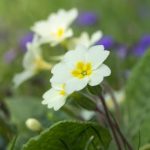Are you looking for country gardening ideas to create a picturesque and serene outdoor space? Whether you live in the countryside or want to bring a touch of rural charm to your urban backyard, country gardening offers a wealth of possibilities. From rustic garden designs to DIY projects and tips for maintenance, this article will guide you through the essentials of creating a beautiful country garden that reflects the tranquility and natural beauty of the countryside.
Country gardening encompasses a range of styles, from cottage gardens overflowing with colorful blooms to traditional vegetable plots and wildflower meadows. The key is to embrace the simplicity, authenticity, and connection to nature that characterizes country living. Through careful planning, thoughtful plant selection, and creative design elements, you can transform your outdoor space into a haven that celebrates the idyllic appeal of rural landscapes.
In this comprehensive guide, we’ll explore the benefits of country gardening, essential considerations for planning and plant selection, as well as practical tips for maintenance and harvesting. Whether you’re an experienced gardener or just starting out, these country gardening ideas are sure to inspire you to create a charming and vibrant outdoor retreat that captures the essence of countryside living.
So let’s dive into the world of country gardening and discover how to cultivate your own unique slice of pastoral paradise.
Benefits of Country Gardening
Country gardening offers numerous benefits for those who enjoy the peaceful and charming environment of rural living. From sustainable food sources to mental health benefits, country gardening is a fulfilling and rewarding activity for people of all ages.
One of the primary benefits of country gardening is the ability to grow and harvest your own fresh produce. This not only ensures a steady supply of organic fruits and vegetables but also reduces your reliance on store-bought produce, saving you money in the long run. Additionally, homegrown fruits and vegetables are often more nutritious and flavorful than their store-bought counterparts.
Another benefit of country gardening is the opportunity to connect with nature and embrace a more sustainable lifestyle. By practicing eco-friendly gardening techniques such as composting, water conservation, and natural pest control, you can reduce your environmental impact while enjoying the beauty of a thriving garden.
Moreover, country gardening provides numerous mental health benefits, including stress relief, improved mood, and increased physical activity. Spending time in nature has been proven to have a positive effect on mental well-being, making country gardening an ideal hobby for those looking to relax and unwind in a natural setting. Whether it’s tending to your plants or simply enjoying the sights and sounds of the great outdoors, country gardening can be a therapeutic experience that promotes overall wellness.
- Access to fresh and organic produce
- Connection with nature and sustainable living
- Improved mental health and well-being
Planning Your Country Garden
When planning your country garden, it’s essential to consider the space you have available and the type of plants that will thrive in your specific climate. Start by assessing your gardening area and determining how much sunlight and shade each section receives throughout the day. This will help you select the appropriate plants for each area of your garden. Additionally, consider factors such as soil quality, drainage, and access to water when planning out your garden layout.
Another important aspect of planning your country garden is determining the overall style or theme you want to achieve. Whether you prefer a traditional cottage garden with an abundance of colorful flowers or a more rustic, natural look with native plants and wildflowers, having a clear vision for your garden’s design will help guide plant selection and landscaping decisions.
It’s also crucial to think about practicality when planning your country garden. Consider elements such as pathways, seating areas, and any additional features you may want to incorporate, such as a vegetable patch or a wildlife-friendly habitat. By carefully planning these details in advance, you can create a well-organized and visually appealing outdoor space that reflects the charm and tranquility of rural living.
| Aspect | Description |
|---|---|
| Sunlight and Shade | Determining the amount of sunlight and shade in different areas of your garden is crucial for plant selection. |
| Garden Style | Deciding on a specific style or theme for your country garden will guide plant selection and landscaping choices. |
| Practical Elements | Considering practical aspects like pathways, seating areas, and special features (vegetable patch, wildlife habitat) during the planning process results in an organized and functional garden. |
Choosing the Right Plants for Country Gardening
When it comes to country gardening, choosing the right plants is crucial for creating a beautiful and sustainable garden that thrives in a natural environment. Whether you have a large expanse of land or a small backyard, selecting the appropriate plants will ensure that your country garden flourishes throughout the seasons.
Native Plants
One of the best approaches to choosing the right plants for country gardening is to opt for native species. Native plants are well-suited to local environmental conditions and require minimal maintenance, making them ideal for a country garden. Research native flowers, shrubs, and trees that are indigenous to your region and incorporate them into your garden design for a truly authentic countryside feel.
Edible Plants
Incorporating edible plants into your country garden not only adds functionality but also enhances its charm. Consider planting fruits, vegetables, and herbs that thrive in your specific climate. This not only provides you with fresh produce but also contributes to the overall aesthetic appeal of your garden.
Drought-Resistant Plants
For areas prone to dry spells or limited water resources, selecting drought-resistant plants is essential. These hardy plants can withstand periods of little water and still maintain their beauty. Look for species such as lavender, succulents, and ornamental grasses that can thrive in arid conditions while adding visual interest to your country garden.
By carefully considering the types of plants you integrate into your country garden, you can create a harmonious and sustainable landscape that reflects the beauty of rural living while enhancing the natural environment around you.
Creating a Rustic Garden Design
When it comes to country gardening, creating a rustic garden design can help to enhance the natural beauty and charm of your outdoor space. A rustic garden design often emphasizes simplicity, natural materials, and an appreciation for the surrounding environment. Whether you have a large country estate or a small cottage garden, incorporating rustic elements into your garden design can elevate the overall look and feel of your outdoor space.
Incorporating Natural Materials
One of the key elements of a rustic garden design is the use of natural materials such as wood, stone, and earthy textures. Consider adding wooden raised beds for vegetable gardens or using stone pathways to create a charming and meandering walkway through your garden. Utilizing these natural materials not only adds to the aesthetic appeal of your garden but also helps to create a sense of harmony with the surrounding landscape.
Embracing Wildflowers and Native Plants
Incorporating wildflowers and native plants into your country garden can further enhance the rustic design aesthetic while also supporting local wildlife. Consider planting varieties such as black-eyed susans, coneflowers, or milkweed to attract pollinators like bees and butterflies. These plants not only add color and texture to your garden but also contribute to the overall health of the ecosystem in your area.
Creating Cozy Outdoor Spaces
In a rustic garden design, creating cozy outdoor spaces where you can relax and unwind is essential. Consider adding a wooden bench under a shady tree or creating a simple seating area with Adirondack chairs around a fire pit.
These cozy nooks provide opportunities to appreciate the beauty of your country garden while encouraging moments of relaxation and connection with nature. Incorporating these elements into your rustic garden design can help you craft an inviting outdoor retreat that reflects the timeless appeal of country gardening ideas.
DIY Garden Projects for a Country Garden
Country gardening offers a wonderful opportunity to get creative and add personal touches to your outdoor space. One of the best ways to enhance your country garden is by taking on do-it-yourself (DIY) projects. Whether you’re a seasoned DIY enthusiast or just starting out, there are plenty of projects that can elevate the charm of your country garden.
A popular DIY project for a country garden is creating rustic wooden planters. These can be made from reclaimed wood, old barrels, or even pallets. Not only do these planters add a quaint and rustic look to your garden, but they also provide the perfect home for your flowers, herbs, and vegetables.
Another fun and practical DIY project for a country garden is building a compost bin. Composting not only reduces waste but also produces nutrient-rich soil for your plants. You can easily construct a compost bin using recycled materials such as wooden pallets, chicken wire, or plastic bins. This project not only benefits your garden but also contributes to sustainability efforts.
Lastly, consider adding decorative elements such as homemade bird feeders or hand-painted garden signs to infuse personality into your country garden. These simple DIY projects can bring joy to both you and your visitors as they admire the unique touches in your outdoor space.
| DIY Garden Projects | Description |
|---|---|
| Rustic Wooden Planters | Create charming planters from reclaimed wood |
| Compost Bin | Build a practical compost bin using recycled materials |
| Decorative Elements | Add handmade bird feeders or personalized garden signs for extra charm |
Maintenance Tips for a Country Garden
Maintaining a country garden is essential for keeping it beautiful and thriving. One of the most important maintenance tasks for a country garden is watering. Depending on the climate and the types of plants in your garden, you may need to water them regularly, especially during dry periods.
Consider installing a drip irrigation system to ensure that your plants receive the right amount of water without wastage. It’s also crucial to monitor for pests and diseases, as they can quickly spread and damage your plants. Regularly inspect your plants for any signs of infestation or disease, and take appropriate action to address any issues.
Another important aspect of maintaining a country garden is proper pruning and trimming. Overgrown plants not only look untidy but can also negatively impact their health and growth. Pruning encourages new growth and helps maintain the shape and size of your plants. Additionally, removing dead or diseased branches can prevent the spread of diseases and improve air circulation within the plant, promoting overall health.
Lastly, keeping your garden tidy through regular weeding and mulching is key to its maintenance. Weeds compete with your plants for nutrients, water, and sunlight, so it’s crucial to stay on top of them. Mulching not only helps suppress weed growth but also retains moisture in the soil, regulates soil temperature, and adds organic matter as it decomposes over time.
By following these maintenance tips for a country garden, you’ll ensure that your garden remains healthy, beautiful, and productive throughout the growing season.
Country gardening ideas focuses on maintaining a natural look in your outdoor space while adding practical design elements that enhance both aesthetics an functionality at home.
Harvesting Your Country Garden’s Bounty
After putting in the hard work of planning, planting, and maintaining your country garden, it’s time to reap the rewards of your labor. Harvesting the fruits (and vegetables) of your labor is one of the most satisfying aspects of country gardening. Here are some tips on how to make the most of your harvest:
- Plan your harvest: Keep track of when each plant is expected to be ready for harvesting. This will help you plan ahead and ensure that you don’t miss the window for picking ripe produce.
- Harvest at the right time: Different fruits and vegetables have different optimal times for harvesting. For example, tomatoes are best when they’re fully red and slightly soft, while zucchinis should be picked while they’re still small and tender. Be sure to research the specific harvesting times for each type of produce in your garden.
- Proper storage: If you find yourself with an abundance of produce from your country garden, it’s important to know how to store it properly. Some fruits and vegetables can be stored in a cool, dark place (such as a root cellar), while others may need to be preserved by canning or freezing.
Harvesting your country garden’s bounty can be a joyful experience, whether you’re plucking ripe strawberries from their vines or pulling up fresh carrots from the earth. By following these country gardening ideas for harvesting, you’ll be able to enjoy the delicious results of your hard work all season long.
Conclusion
In conclusion, country gardening offers a wealth of benefits and opportunities to create a beautiful and functional outdoor space. The act of planning, planting, and maintaining a country garden provides not only physical exercise but also mental relaxation and emotional well-being. The connection with nature, the satisfaction of growing your own food, and the opportunity to express your creativity through rustic garden design make country gardening a truly rewarding experience.
When planning your country garden, take the time to consider the layout, the types of plants you want to grow, and any DIY projects you’d like to undertake. By carefully selecting the right plants for your climate and soil conditions, you can ensure a successful and thriving garden that will bring joy for months or even years to come.
As you embark on your country gardening journey, remember that maintenance is key to keeping your garden looking its best. Regular weeding, watering, and pest control will help keep your plants healthy and vibrant.
And when harvest time arrives, savor the fruits of your labor by enjoying fresh produce straight from your own garden. Whether you’re new to gardening or have been tending to plants for years, embracing the beauty of country gardening ideas can bring endless joy and satisfaction.
Frequently Asked Questions
How to Design a Country Garden?
Designing a country garden involves incorporating natural elements like wildflowers, meandering pathways, and cozy seating areas. It’s important to choose a mix of plants, create focal points, and consider the overall ambiance of relaxation and tranquility.
What Is Cottage Style Garden?
A cottage style garden is reminiscent of quaint English countryside cottages with its informal, charming, and slightly overgrown look. It typically features a mix of flowers, herbs, and small shrubs planted in a seemingly haphazard but aesthetically pleasing manner.
How to Build an English Country Garden?
Building an English country garden requires careful planning and attention to detail. Incorporating traditional elements like formal hedges, topiaries, manicured lawns, and carefully chosen perennials can help achieve the classic English garden look. It’s also important to consider using natural materials like stone or gravel for paths and borders to complete the authentic feel of the space.

Welcome to my gardening blog! I am passionate about plants and enjoy sharing my knowledge and experiences with others. In this blog, I will write about everything related to gardening, from tips on how to get started to updates on my own garden projects.





